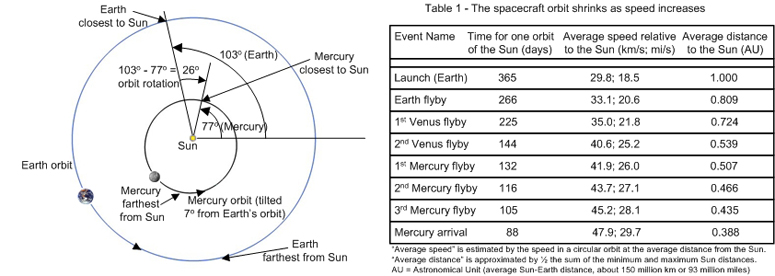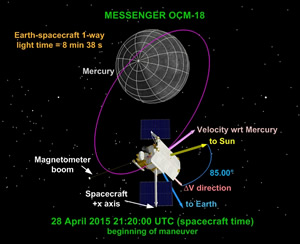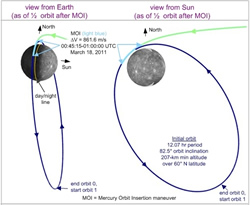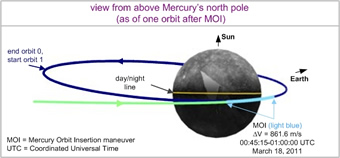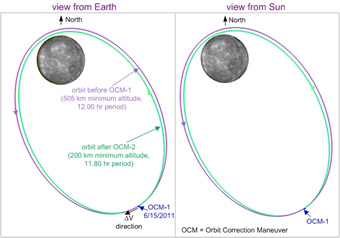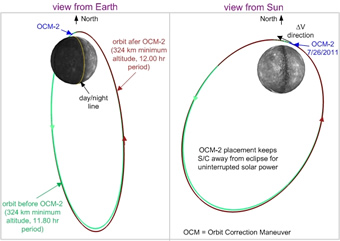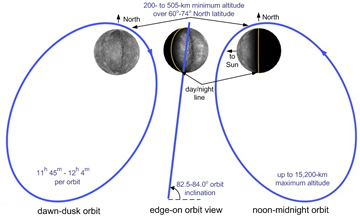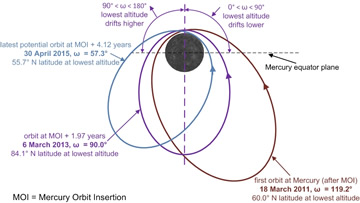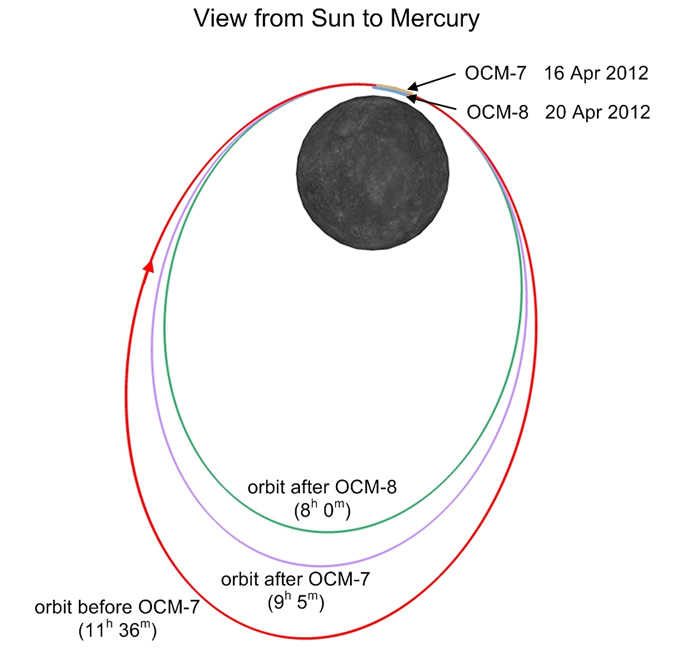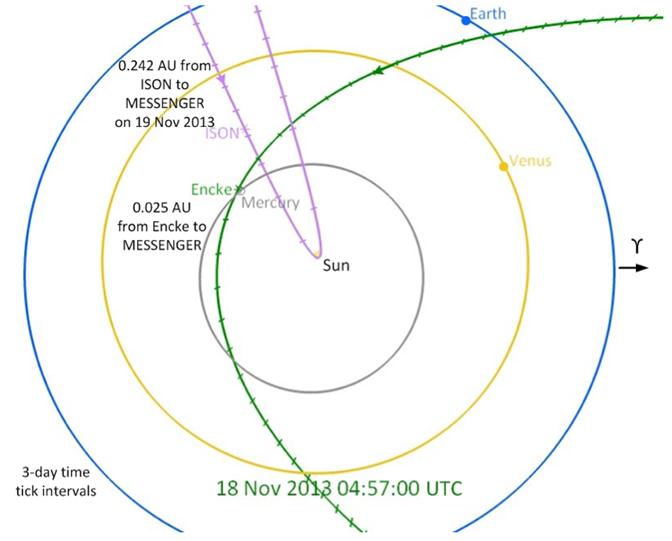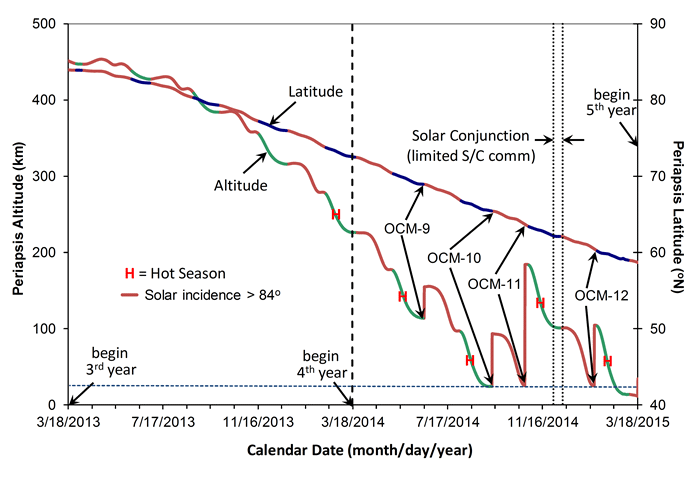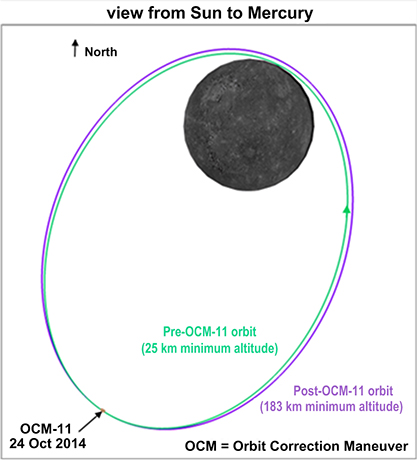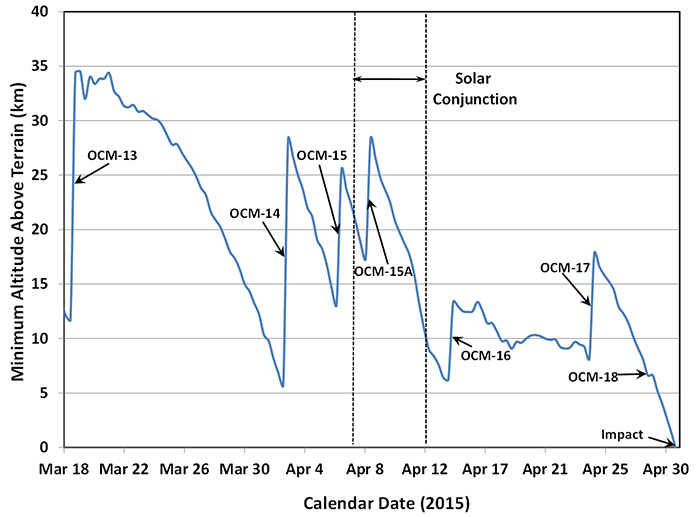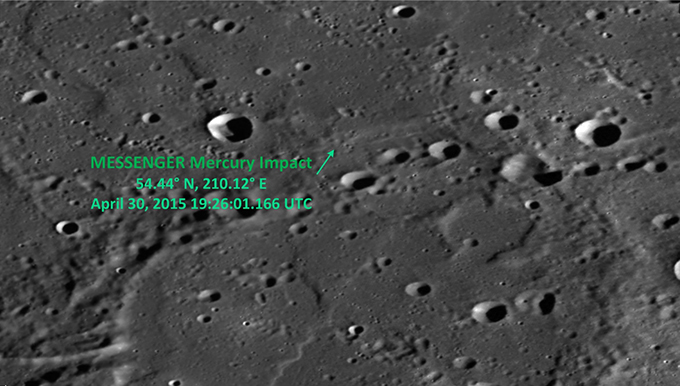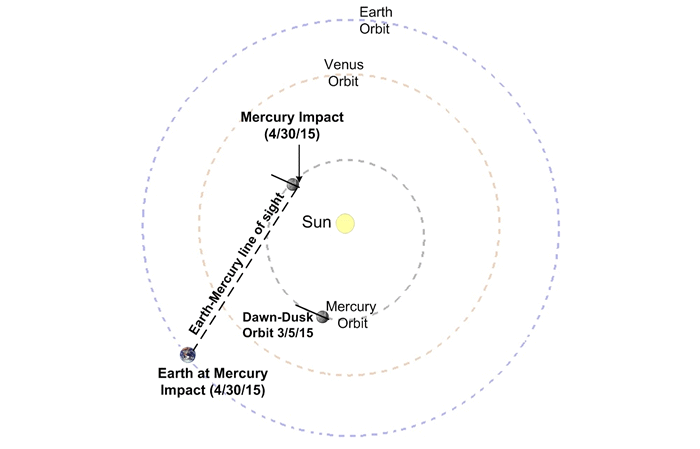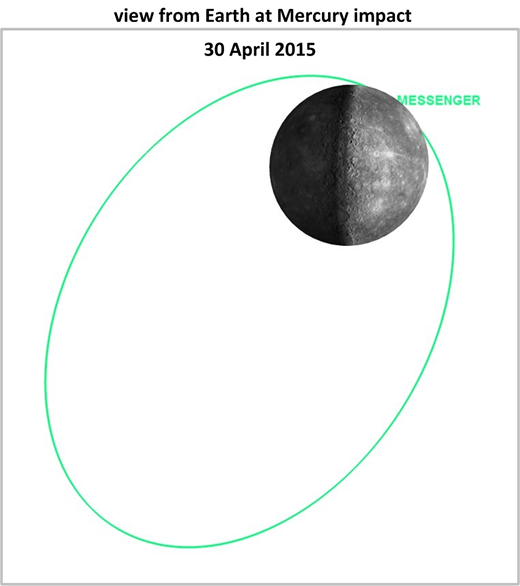Launch and Cruise
MESSENGER launched from Cape Canaveral Air Force Station, Fla., on August 3, 2004. It returned to Earth for a gravity boost on August 2, 2005, then it flew past Venus twice, in October 2006 and June 2007. The spacecraft used the tug of Venus’ gravity to resize and rotate its trajectory closer to Mercury’s orbit.
MESSENGER Trajectory
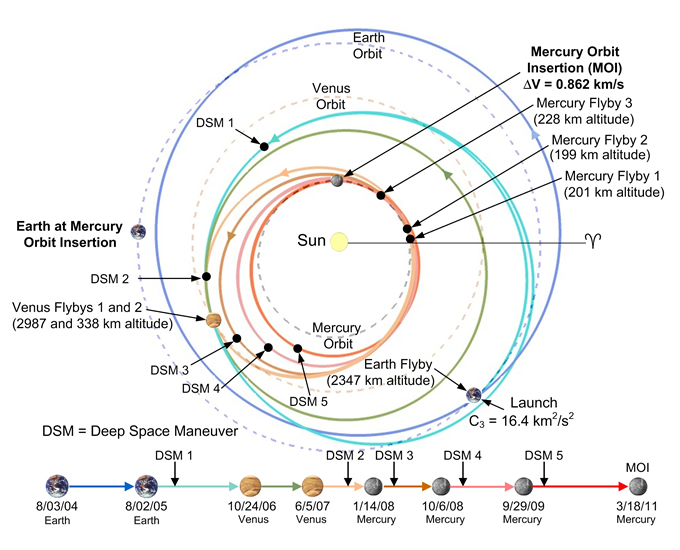
The mission began with launch from Cape Canaveral Air Force Station, Fla., on August 3, 2004. After returning to Earth for a gravity assist on August 2, 2005, MESSENGER headed toward the first of two Venus flybys. The first occurred on October 24, 2006, when the spacecraft approached the planet from its dayside. MESSENGER again flew past a mostly sunlit Venus on June 5, 2007.
The Mercury flybys on January 14, 2008, October 6, 2008, and September 29, 2009, provided the first close-up look at Mercury in more than 30 years. On all three flybys, the spacecraft departed with sunlit views of the planet, taking pictures of the regions not seen by the first spacecraft to visit Mercury - Mariner 10. This early science return was invaluable in planning observation strategies for MESSENGER's historic yearlong orbit mission, which began in March 2011.
On the way, MESSENGER also performed several trajectory correction maneuvers, thruster burns that adjust its path to Mercury.
Three Mercury flybys, each followed about two months later by a course correction maneuver, put MESSENGER in position to enter Mercury orbit in March 2011. During the flybys – which occurred in January 2008, October 2008 and September 2009 – MESSENGER mapped nearly the entire planet in color, imaged most of the areas unseen by Mariner 10, and measured the composition of the surface, atmosphere and magnetosphere. The three successful flybys of Mercury by the MESSENGER spacecraft returned the first new data from Mercury in more than 30 years. This data was invaluable as plans were made for MESSENGER’s yearlong orbital mission.
During the 4.9-billion (4,900,000,000) mile (about 7.9-billion kilometers) journey from launch to Mercury orbit, the spacecraft experienced a range of extreme conditions. One such extreme included repeated passes at a distance 70% closer to the Sun than the Earth's average distance from the Sun. At this distance, the spacecraft received about 11 times more of the Sun's thermal energy than Earth-orbiting satellites. Shortly after each of the first two Mercury flybys, the spacecraft approached the ultimate speed record for all spacecraft up to that point by achieving speeds of over 140,000 miles per hour (over 225,300 kilometers per hour) relative to the Sun - about eight times faster than the speed of NASA's Space Shuttle in low-Earth orbit. The Helios-2 spacecraft achieved at least 150,000 miles per hour relative to the Sun on April 17, 1976.
The final maneuver dates and velocity change (ΔV) values for the mission’s deep space maneuvers (DSMs) and trajectory correction maneuvers (TCMs) that took place during the cruise phase are shown in the table below. The DSM designation identifies the TCMs with the largest velocity change, which include all but one of the maneuvers (TCM-3) required in the pre-launch planned cruise-phase trajectory. Contingency maneuvers TCM-4, TCM-7, TCM-8, TCM-14, and TCM-17 were never implemented due to the achievement of sufficient accuracy with the prior TCM. After TCM-19 only DSMs were required before Mercury orbit insertion, based on the effective implementation of a strategy to orient the spacecraft sunshade and solar panel for sufficient durations to use sunlight particles to correct small TCM implementation errors (known as “solar sailing”),
Primary Maneuvers
| Maneuver | Alternate Name | Calendar Date | Delta-V (m/s) | Purpose |
|---|---|---|---|---|
| DSM-1 | TCM-9 | 12 Dec 2005 | 315.6 | target the first Venus flyby |
| DSM-2 | TCM-18 | 17 Oct 2007 | 227.4 | target the first Mercury flyby and test the spacecraft configuration to be used in future maneuvers; component maneuver |
| DSM-3 | TCM-23 | 19 Mar 2008 | 72.2 | target the second Mercury flyby and test spacecraft rotation during a maneuver as required for Mercury orbit insertion |
| DSM-4 (part 1) | TCM-29A | 4 Dec 2008 | 222.1 | target the third Mercury flyby |
| DSM-4 (part 2) | TCM-29B | 8 Dec 2008 | 24.7 | target the third Mercury flyby and test spacecraft rotation during a maneuver |
| DSM-5 | TCM-35 | 24 Nov 2009 | 177.75 | target Mercury arrival for orbit insertion |
Secondary Maneuvers
| Maneuver | Calendar Date | Delta-V (m/s) | Purpose |
|---|---|---|---|
| TCM-1 | 24 Aug 2004 | 17.9 | correct most inaccuracies resulting from launch |
| TCM-2 | 24 Sep 2004 | 4.6 | correct all remaining inaccuracies resulting from launch |
| TCM-3 | 18 Nov 2004 | 3.2 | target the Earth flyby |
| TCM-5 | 23 Jun 2005 | 1.1 | target the Earth flyby |
| TCM-6 | 21 Jul 2005 | 0.2 | target the Earth flyby |
| TCM-10 | 22 Feb 2006 | 1.3 | target the first Venus flyby |
| TCM-11 | 12 Sep 2006 | 1.7 | target the first Venus flyby; component maneuver |
| TCM-12 | 5 Oct 2006 | 0.5 | target the first Venus flyby |
| TCM-13 | 2 Dec 2006 | 25.6 | target the second Venus flyby; component maneuver |
| TCM-15 | 25 Apr 2007 | 0.6 | target the second Venus flyby |
| TCM-16 | 25 May 2007 | 0.2 | target the second Venus flyby |
| TCM-19 | 19 Dec 2007 | 1.1 | target the first Mercury flyby |
View detailed information on all of MESSENGER's propulsive activity from launch to the present.
